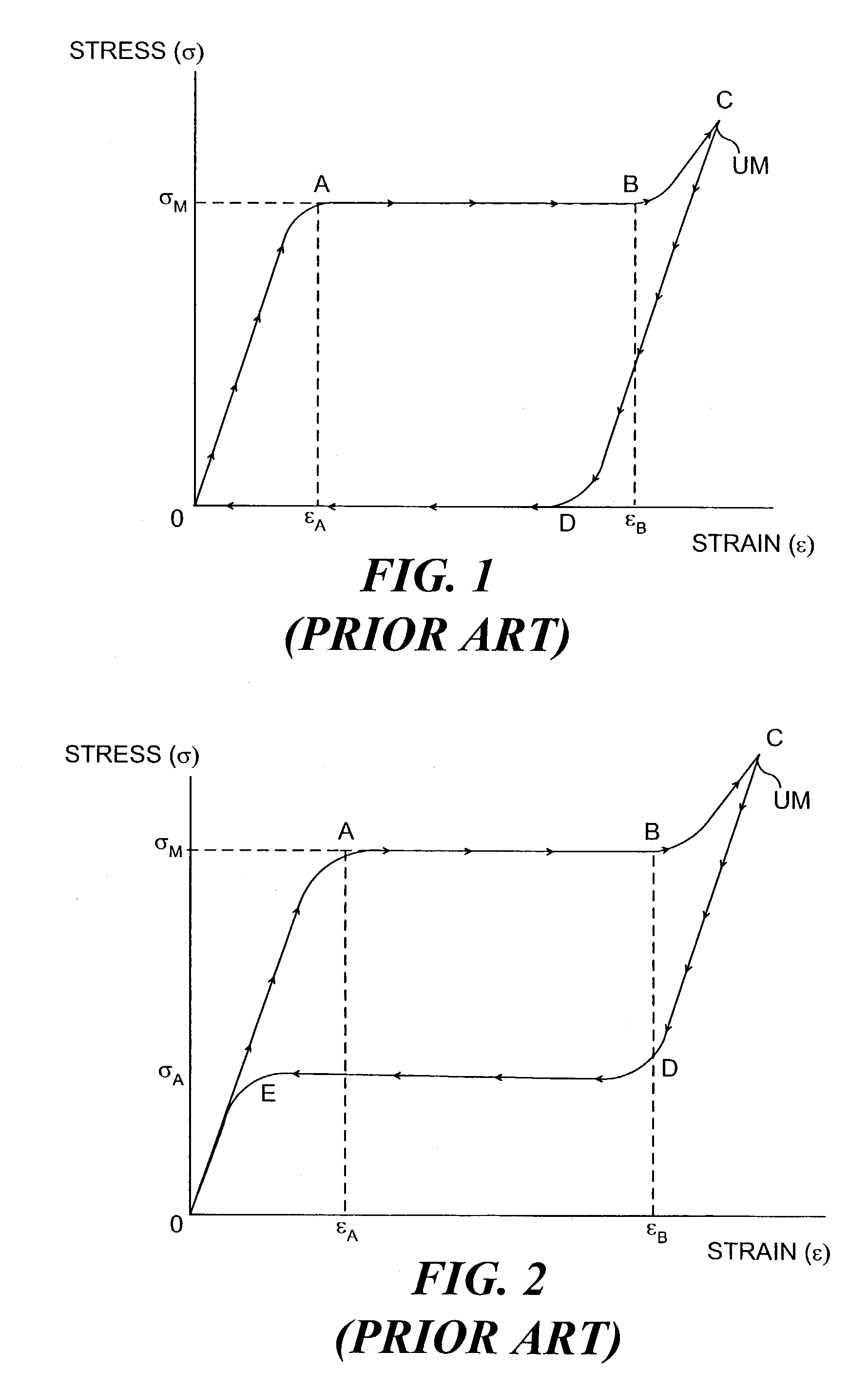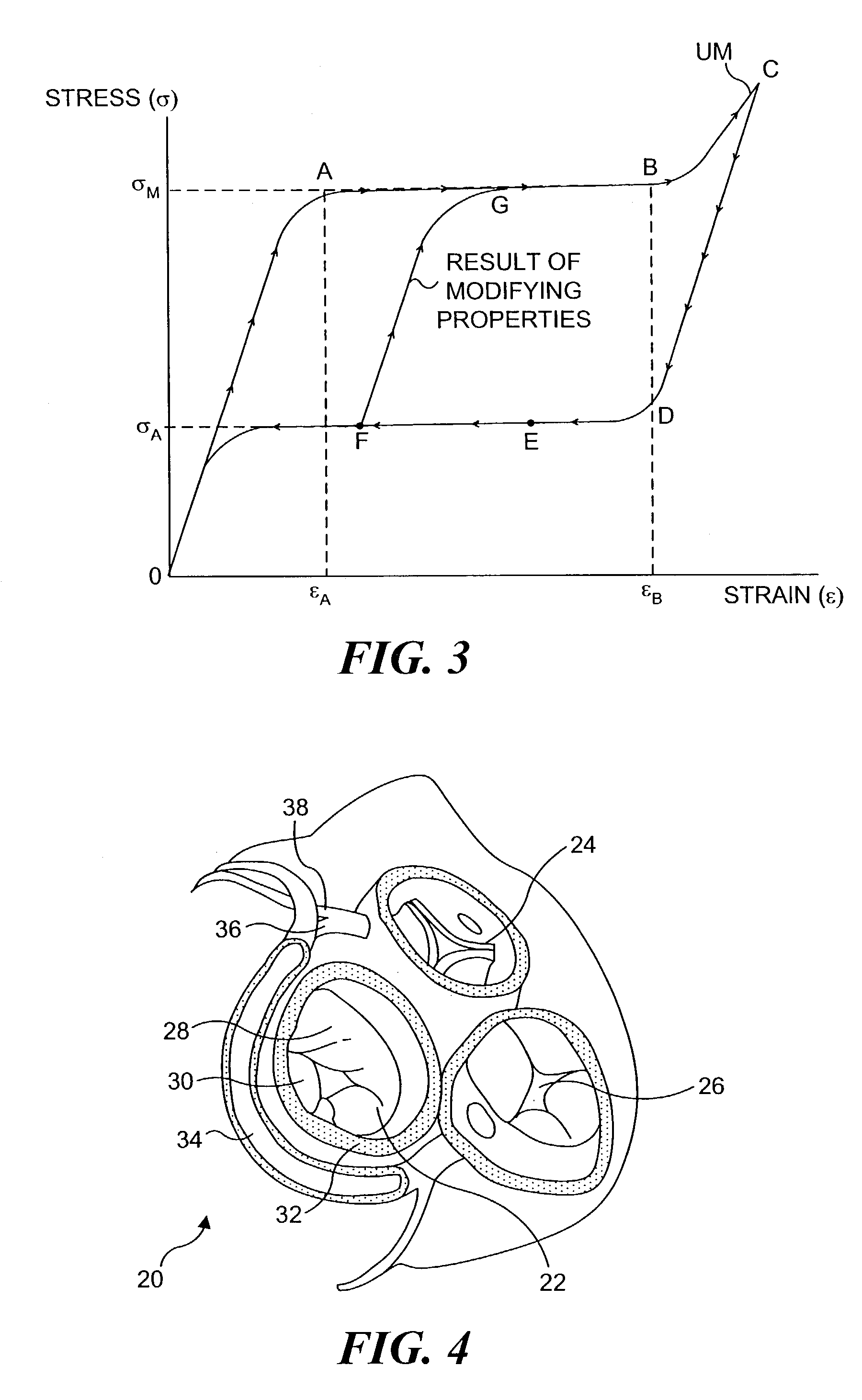Mitral valve device using conditioned shape memory alloy
a technology of conditioned shape and alloy, which is applied in the field of mitral valve devices using conditioned shape memory alloy, can solve the problems of devices changing to austenite states, and achieve the effect of sufficient radial stiffness and reduced friction effects
- Summary
- Abstract
- Description
- Claims
- Application Information
AI Technical Summary
Benefits of technology
Problems solved by technology
Method used
Image
Examples
Embodiment Construction
[0057]To understand the present invention, it is necessary to understand austenite to martensite transformations that occur in a SMA and understand how SMA can be used advantageously in the coronary sinus for modifying the mitral valve annulus. After discussing these concepts, the disclosure will turn to specific devices, methods and assemblies of the present invention.
[0058]FIGS. 1–3 illustrate stress-strain curves for martensite-austenitic conversion of an SMA. In these Figures, the SMA is warmed to human body temperature (herein considered to be about 37° C.), which is between Ms and Md for the SMA, so that the SMA is initially austenitic. The following discussion assumes that Ms is equal to Mf, and that As is equal to Af. FIG. 1 shows the case when the As temperature is adjusted higher than 37° C., so that any martensite formed by an applied stress is stable; while FIGS. 2 and 3 show cases where the Af temperature is adjusted below 37° C., so that austenite, at zero stress, is t...
PUM
 Login to View More
Login to View More Abstract
Description
Claims
Application Information
 Login to View More
Login to View More - R&D
- Intellectual Property
- Life Sciences
- Materials
- Tech Scout
- Unparalleled Data Quality
- Higher Quality Content
- 60% Fewer Hallucinations
Browse by: Latest US Patents, China's latest patents, Technical Efficacy Thesaurus, Application Domain, Technology Topic, Popular Technical Reports.
© 2025 PatSnap. All rights reserved.Legal|Privacy policy|Modern Slavery Act Transparency Statement|Sitemap|About US| Contact US: help@patsnap.com



